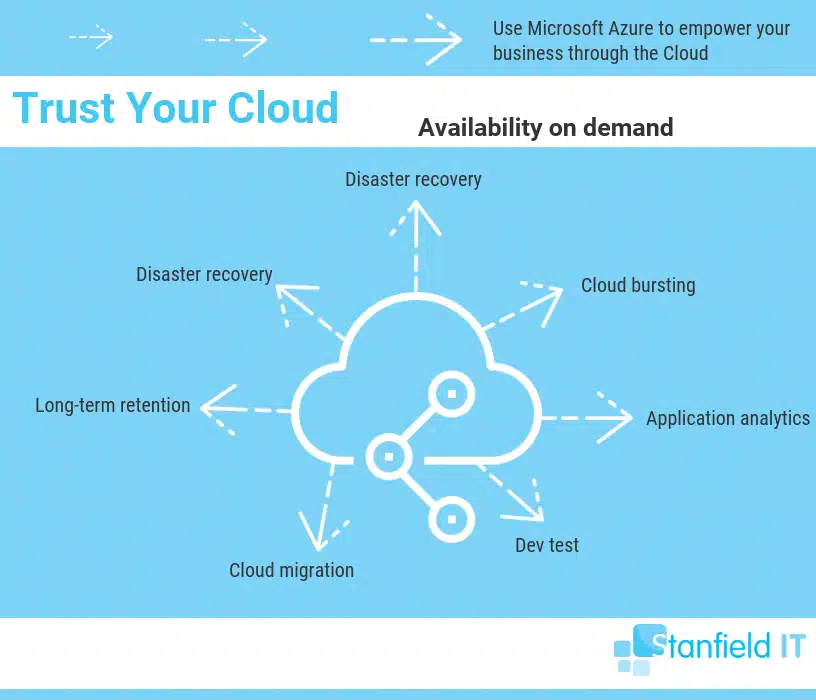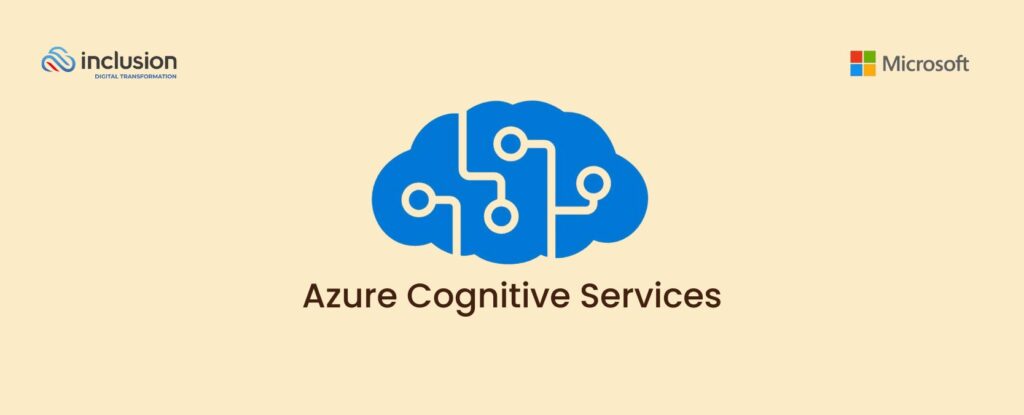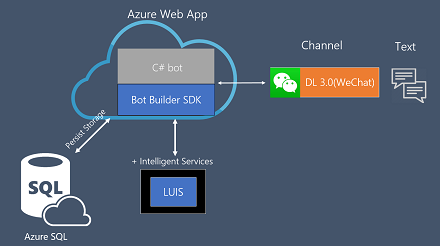Are you curious about how businesses are harnessing the power of the cloud to achieve remarkable success? Look no further than Azure Case Studies: Success Stories in the Cloud. This captivating article explores real-life examples of how Azure, Microsoft’s cloud computing platform, is empowering businesses to reach new heights. Discover how organizations of all sizes and industries are leveraging Azure’s cutting-edge technology to streamline their operations, enhance their customer experiences, and drive innovation. Get inspired by these compelling case studies that showcase the transformative potential of Azure.

Case Study 1: Transforming Retail Operations
Background
In this case study, we will explore how Azure has enabled a retail company to transform its operations and thrive in the digital age. The retail industry is highly competitive, with consumers demanding a seamless shopping experience across multiple channels. Traditional brick-and-mortar stores are facing pressure to adapt to the changing landscape and stay relevant in the face of e-commerce giants.
Challenges
The retail company faced several challenges, including outdated systems, disjointed processes, and an inability to meet customer expectations. Inventory management was inefficient and often led to stock-outs or excess inventory. The lack of real-time data made it difficult to make informed business decisions and optimize operations. The company needed a technology solution that could streamline processes, provide real-time insights, and improve customer experience.
Solution
By leveraging Azure, the retail company was able to modernize its operations and create a seamless shopping experience for its customers. Azure provided a scalable and secure cloud platform that enabled the company to centralize its data, automate processes, and gain real-time visibility into its operations. With Azure’s artificial intelligence (AI) and machine learning capabilities, the company was able to optimize inventory management, personalize customer recommendations, and automate pricing strategies. In addition, Azure’s robust analytics tools allowed the company to gain valuable insights from its data and make data-driven decisions.
Results
The implementation of Azure resulted in significant improvements for the retail company. The streamlined operations and real-time insights enabled the company to reduce stock-outs and excess inventory, resulting in cost savings and improved customer satisfaction. The personalized recommendations and automated pricing strategies led to increased sales and higher customer engagement. The retail company was able to stay competitive in the ever-changing retail landscape and deliver a seamless shopping experience to its customers.
Case Study 2: Enhancing Customer Experience in Financial Services
Background
This case study delves into how Azure has empowered a financial services company to enhance its customer experience and drive growth. The financial services industry is highly regulated and customer-centric, with consumers seeking personalized and convenient services. Traditional financial institutions are facing challenges in adapting to changing customer expectations and the rise of digital disruptors.
Challenges
The financial services company faced several challenges, including legacy systems, complex regulatory requirements, and a lack of agility in serving its customers. The company struggled to provide seamless and personalized experiences across multiple channels. Data security and privacy were also paramount concerns. The company needed a technology solution that could integrate its various systems, enable compliance with regulations, and provide a superior customer experience.
Solution
With Azure, the financial services company was able to overcome its challenges and deliver a tailored and secure customer experience. Azure provided a flexible and secure cloud platform that enabled the company to modernize its systems and integrate its data sources. The company leveraged Azure’s AI and machine learning capabilities to personalize customer interactions, automate compliance processes, and detect fraudulent activities. Azure’s advanced security features and data encryption ensured the protection of sensitive customer information.
Results
Through the implementation of Azure, the financial services company experienced significant improvements in its customer experience and business outcomes. The personalized customer interactions and automated compliance processes enhanced customer satisfaction and loyalty. The company was able to streamline its operations, reduce costs, and improve efficiency. The advanced security measures provided peace of mind to both the company and its customers, establishing trust and credibility in the industry. Overall, Azure empowered the financial services company to stay ahead of the competition and deliver exceptional customer experiences.
Case Study 3: Streamlining Manufacturing Processes
Background
In this case study, we will explore how Azure has enabled a manufacturing company to streamline its processes and achieve operational excellence. The manufacturing industry is highly competitive, with companies constantly striving to improve efficiency, reduce costs, and meet customer demands. Legacy systems and manual processes often hinder the ability to achieve these goals.
Challenges
The manufacturing company faced several challenges, including outdated systems, siloed data, and manual processes. These challenges resulted in inefficiencies, delays, and a lack of real-time visibility into operations. The company needed a technology solution that could integrate its disparate systems, automate processes, and provide real-time insights for continuous improvement.
Solution
By leveraging Azure, the manufacturing company was able to transform its operations and achieve operational excellence. Azure provided a scalable and secure cloud platform that allowed the company to centralize its data, automate workflows, and gain real-time visibility into its manufacturing processes. The company utilized Azure’s IoT capabilities to connect its existing machinery and capture real-time data for predictive maintenance and optimization. Azure’s analytics tools enabled the company to identify bottlenecks, optimize workflows, and drive continuous improvement.
Results
The implementation of Azure yielded significant improvements for the manufacturing company. The streamlined processes and real-time visibility enabled the company to reduce production time, minimize downtime, and optimize resource utilization. The predictive maintenance capabilities of Azure allowed the company to proactively address equipment issues, resulting in decreased maintenance costs and improved overall equipment effectiveness. The company was able to meet customer demands more effectively, respond to market changes rapidly, and maintain a competitive edge in the manufacturing industry.
Case Study 4: Optimizing Supply Chain Management
Background
This case study explores how Azure has empowered a company to optimize its supply chain management and achieve greater efficiency. The supply chain is a complex network of activities involving multiple stakeholders and processes. Traditional supply chain management often faces challenges in terms of visibility, coordination, and data sharing.
Challenges
The company faced several challenges in its supply chain management, including lack of visibility, siloed information, and manual processes. The lack of real-time insights hindered the company’s ability to make informed decisions and respond to changing market dynamics. The company needed a technology solution that could provide end-to-end visibility, enable collaboration with suppliers and partners, and automate processes for greater efficiency.
Solution
With Azure, the company was able to optimize its supply chain management and achieve significant improvements. Azure provided a scalable and secure cloud platform that allowed the company to integrate its supply chain processes, collaborate with suppliers and partners, and gain real-time insights into its operations. The company leveraged Azure’s AI and machine learning capabilities to forecast demand, optimize inventory levels, and automate procurement processes. Azure’s data analytics tools enabled the company to analyze historical data, identify trends, and make data-driven decisions.
Results
The implementation of Azure led to tangible benefits for the company’s supply chain management. The real-time visibility and collaboration capabilities enabled the company to proactively address supply chain disruptions, optimize inventory levels, and reduce lead times. The demand forecasting and procurement automation resulted in cost savings and improved inventory turnover. The company was able to enhance its relationships with suppliers and partners, resulting in improved coordination and responsiveness. Overall, Azure enabled the company to optimize its supply chain management and achieve operational excellence.

Case Study 5: Revolutionizing Healthcare Delivery
Background
This case study delves into how Azure has revolutionized healthcare delivery by empowering a healthcare organization to provide better patient care and improve outcomes. The healthcare industry is rapidly evolving, with advancements in technology, changing patient expectations, and the need for efficient care delivery.
Challenges
The healthcare organization faced several challenges, including fragmented patient data, inefficient operational processes, and limited access to specialized care. The lack of interoperability and real-time data hindered the organization’s ability to provide timely and personalized care. The organization needed a technology solution that could integrate its systems, enable secure data sharing, and support telehealth services for improved patient access.
Solution
With Azure, the healthcare organization was able to transform its care delivery processes and revolutionize patient care. Azure provided a secure and compliant cloud platform that enabled the organization to consolidate patient data, automate workflows, and deliver personalized care experiences. The organization leveraged Azure’s AI capabilities to analyze patient data, identify patterns, and provide predictive insights for early intervention. Azure’s telehealth solutions enabled the organization to provide virtual consultations, monitor patients remotely, and extend specialized care to underserved areas.
Results
The implementation of Azure led to significant improvements in healthcare delivery and patient outcomes for the organization. The integrated patient data and automated workflows improved care coordination, reduced administrative burden, and increased operational efficiency. The predictive insights provided by Azure empowered healthcare providers to intervene early, prevent complications, and improve patient outcomes. The telehealth services enhanced patient access to care, particularly in remote areas or for individuals with limited mobility. Overall, Azure revolutionized healthcare delivery for the organization, enabling better patient care and improved outcomes.
Case Study 6: Driving Innovation in Education
Background
This case study showcases how Azure has driven innovation in education by empowering an educational institution to transform its teaching and learning processes. The education industry is undergoing a digital transformation, with the need for personalized learning experiences, remote education, and collaboration among educators and students.
Challenges
The educational institution faced several challenges, including outdated teaching methodologies, limited access to resources, and lack of collaboration tools. Traditional classrooms often struggled to engage students effectively and cater to diverse learning needs. The institution needed a technology solution that could enable personalized learning, provide access to digital resources, and foster collaboration among educators and students.
Solution
With Azure, the educational institution was able to drive innovation in its teaching and learning processes. Azure provided a scalable and secure cloud platform that enabled personalized learning experiences, access to digital resources, and collaboration among educators and students. The institution leveraged Azure’s AI capabilities to develop personalized learning paths, provide real-time feedback, and enhance student engagement. Azure’s collaboration tools enabled educators and students to work together seamlessly, share resources, and create a collaborative learning environment.
Results
The implementation of Azure resulted in transformative outcomes for the educational institution. The personalized learning experiences and access to digital resources enhanced student engagement, improved academic performance, and catered to diverse learning needs. The collaboration tools provided by Azure fostered teamwork, creativity, and critical thinking skills among educators and students. The institution was able to adapt to remote learning requirements effectively, ensuring continuity of education during unforeseen circumstances. Overall, Azure drove innovation in education for the institution, empowering students and educators to thrive in the digital world.

Case Study 7: Empowering Non-Profit Organizations
Background
This case study highlights how Azure has empowered non-profit organizations to achieve their missions and make a positive impact in their communities. Non-profit organizations face unique challenges in terms of limited resources, donor management, and impact measurement. They need technology solutions that can help streamline operations, enhance donor relationships, and provide insights for informed decision-making.
Challenges
Non-profit organizations face several challenges, including donor management, fundraising, and impact measurement. Traditional manual processes often result in inefficiencies and limited scalability. The lack of data-driven insights hinders the organization’s ability to measure impact, make strategic decisions, and build sustainable donor relationships. These organizations need a technology solution that can help streamline operations, automate processes, and provide real-time insights.
Solution
With Azure, non-profit organizations are empowered to overcome their challenges and achieve their missions effectively. Azure provides a secure and scalable cloud platform that enables organizations to centralize their data, automate processes, and gain real-time insights. Non-profit organizations can leverage Azure’s AI and machine learning capabilities to segment donors, personalize communications, and optimize fundraising campaigns. Azure’s analytics tools enable impact measurement, data visualization, and informed decision-making.
Results
The implementation of Azure has enabled non-profit organizations to drive positive change in their communities. The streamlined operations and automation capabilities have helped organizations reduce administrative burdens, increase efficiency, and allocate resources effectively. The personalized donor communications and optimized fundraising campaigns have resulted in increased donor engagement and support. The data-driven insights provided by Azure have empowered organizations to measure their impact, identify areas for improvement, and make data-driven decisions. Overall, Azure has empowered non-profit organizations to achieve their missions more effectively and make a lasting difference in their communities.
Case Study 8: Expanding E-commerce Capabilities
Background
This case study explores how Azure has enabled a company to expand its e-commerce capabilities and tap into the growing digital market. E-commerce is rapidly transforming the retail landscape, with consumers increasingly turning to online channels for their shopping needs. Traditional retailers need to adapt and establish a strong e-commerce presence to stay competitive.
Challenges
The company faced several challenges in expanding its e-commerce capabilities, including outdated systems, limited online presence, and scalability concerns. The company needed a technology solution that could enable seamless online experiences, handle increased web traffic, and integrate with existing systems for efficient operations.
Solution
With Azure, the company was able to expand its e-commerce capabilities and establish a strong online presence. Azure provided a scalable and secure cloud platform that enabled the company to create a seamless shopping experience for its customers. The company leveraged Azure’s e-commerce solutions to build a robust online store, optimize product catalogs, and provide personalized recommendations. Azure’s scalability ensured that the company could handle increased web traffic during peak periods without any disruption in service. Integration with existing systems enabled efficient inventory management and order fulfillment.
Results
The implementation of Azure led to significant improvements in the company’s e-commerce capabilities and business outcomes. The robust online store and personalized recommendations enhanced customer engagement, increased conversions, and drove sales growth. The scalability of Azure allowed the company to handle increased web traffic during peak periods while maintaining a seamless shopping experience. The integration with existing systems enabled efficient order fulfillment, minimizing errors and delays. Overall, Azure empowered the company to tap into the growing digital market, expand its customer base, and establish a strong e-commerce presence.

Case Study 9: Securing Data and Infrastructure
Background
This case study highlights how Azure has enabled a company to secure its data and infrastructure in an increasingly digital and interconnected world. Data breaches and cyber threats are on the rise, making data security and infrastructure protection critical for organizations across industries.
Challenges
The company faced several challenges in securing its data and infrastructure, including evolving cyber threats, compliance requirements, and limited in-house expertise. The company needed a robust and scalable technology solution that could provide advanced security features, simplify compliance management, and minimize the risk of data breaches.
Solution
With Azure, the company was able to enhance its data security and protect its infrastructure against cyber threats. Azure provides a secure and compliant cloud platform that enables organizations to implement advanced security measures. The company leveraged Azure’s security features, such as threat detection and prevention, data encryption, and identity and access management, to safeguard its data and infrastructure. Azure’s compliance management tools simplified the organization’s adherence to regulatory requirements and ensured data privacy.
Results
The implementation of Azure led to enhanced data security and infrastructure protection for the company. The advanced security measures provided by Azure minimized the risk of data breaches and cyber threats, ensuring the integrity and confidentiality of sensitive information. The compliance management tools enabled the company to meet regulatory requirements efficiently, reducing compliance risks and penalties. The company gained peace of mind, knowing that its data and infrastructure were secure, allowing it to focus on core business activities. Overall, Azure empowered the company to secure its data and infrastructure in an increasingly digital world.
Case Study 10: Scaling Big Data Analytics
Background
This case study focuses on how Azure has enabled a company to scale its big data analytics capabilities and gain valuable insights from its data. The proliferation of data presents both opportunities and challenges for organizations, with the need to extract meaningful insights from large and complex datasets.
Challenges
The company faced several challenges in scaling its big data analytics capabilities, including data storage limitations, processing bottlenecks, and lack of real-time insights. The company needed a technology solution that could handle massive volumes of data, enable real-time analytics, and provide predictive capabilities for informed decision-making.
Solution
With Azure, the company was able to scale its big data analytics capabilities and unlock insights from its data. Azure provided a scalable and secure cloud platform that enabled the company to store, process, and analyze vast amounts of data. The company leveraged Azure’s big data technologies, such as Azure Data Lake Storage and Azure Databricks, to ingest, transform, and analyze its data. Azure’s advanced analytics tools, such as Azure Machine Learning and Power BI, enabled the company to gain valuable insights, predict future trends, and make data-driven decisions.
Results
The implementation of Azure led to significant improvements in the company’s big data analytics capabilities and business outcomes. The scalable and secure storage provided by Azure ensured that the company could store and analyze vast amounts of data with ease. The real-time analytics capabilities enabled the company to gain timely insights, respond to market changes rapidly, and identify emerging trends. The predictive capabilities of Azure empowered the company to make informed decisions, anticipate customer needs, and optimize business processes. Overall, Azure enabled the company to scale its big data analytics capabilities and gain a competitive edge in its industry.

